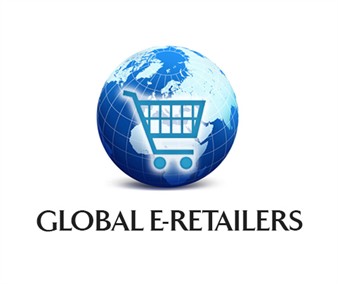Localization Strategy for Global E-Retailers
There is a huge opportunity waiting for those e-retailers brave enough to cross international borders and market to a global audience. E-retailers that treat localization and translation as fundamental parts of their global marketing and content strategies rather than as an afterthought stand to gain the largest piece of a very large $1 Trillion+ global pie.
The global business-to-consumer (B2C) e-commerce market topped $1 Trillion USD in 2012 (eMarketer, “ Ecommerce Sales Topped $1 Trillion for First Time in 2012“) and is expected to exceed $1.25 trillion in 2013. The industry’s growth is ignited by emerging markets with the majority of ecommerce growth expected to come from emerging markets by 2015. This is especially true of Asia Pacific countries, with China driving most of the region’s e-commerce growth. Retailers such as Costco and Macy’s are flocking to China to take advantage of its huge market – nearly 220 million people in China purchased products online in 2012.

Let’s take a look at the key translation and localization components of a truly global content strategy for E-Retailers.
Website Localization
A great website is the single most important asset an E-Retailer can have to help develop a global brand that will attract customers all over the world. Website localization is more than just translating the customer-facing webpage text. Some key components of website localization for an E-Retailer include:
- Translation of user interface
- Localization of graphics
- Currency conversion
- Product database/catalog translation
- Localization of online ordering platform (shopping carts)
- Online QA and Web testing
- Adaptation of site and catalog/product database search function to accommodate the way users in foreign markets search
Addressing these before trying to sell into new markets is the only way to ensure success. Going into a market before providing culturally appropriate and compelling content and ecommerce website features that work for a user’s locale, is sure to lead to lost potential customers, not acquiring new ones.
Another key aspect for global E-Retailers in regards to website localization is responsive web design for the global market. As mobile devices become more main stream and shoppers increasingly access e-retail websites from their smartphones and tablets, it is essential that global E-Retailers ensure their websites are optimized for viewing on multiple screen types. For example, is your e-commerce website targeting China? Text tends to take up less space when translated into Chinese, so you want to make sure your localized Chinese website doesn’t have too much unattractive white space, whether it is viewed from a PC, tablet or smartphone.
Multilingual Search Engine Marketing
Launching a multilingual website is one step for an E-Retailer to establish a strong presence in their global and local markets, but how do they drive traffic to the new language versions of their website in their target markets? By conducting some form of Global Search Engine Marketing, which includes these Search Engine Optimization (SEO) and Search Engine Advertising (SEA) components:
- Multilingual keyword research and keyword localization
- On-page and on-site optimization, including optimization of meta tags and keyword rich headings
- International search engine and directories submissions
- Website analytics and traffic reports
- Multilingual Pay-Per-Click (PPC) campaign content copywriting localization and campaign management
Localization Integration
When you walk the floors of the Internet Retailer Conference & Exhibition, it is mind boggling to see how many add-on capabilities there are today for internet retailers to integrate into their ecommerce websites: ERP systems, CRM systems, Content Management Systems, Data Warehousing to name a few.
In a few years, the add-on solutions for ecommerce systems will double. Given the proliferation of emerging and international markets in the internet retail industry, it is a sure bet that many of these ecommerce integrations will have something to do with multilanguage capabilities and localization. Tools already exist to perform currency conversions, help prevent international credit card fraud, manage currency fluctuations, comply with import & export regulations, and other key aspects of doing business internationally.
Some translation services providers also offer capabilities for integrating translation and localization management tools into an ecommerce platform. Such integrations can help internet retailers reduce time-to-market for their products in foreign markets, release multiple language versions simultaneously, reduce translation costs and increase consistency of translated terminology across different sites or the enterprise as a whole.
Customer Service
You wouldn’t think about leaving your English-speaking customers without customer service support, would you? When you localize your internet retail website into another language to support a foreign market, you are inviting those customers to reach out to you in their native language. So, you had better be prepared to offer support in that language as well.
Foreign language customer service can take the form of in-country or virtual call centers, online chat environments, or email. In any case, there are a variety of services and tools that internet retailers can utilize to support foreign language speaking customers, such as telephone interpreting services, multilingual real-time chat applications (which may use machine translation technology) and other tools to easily and rapidly translate customer service related content.

Social Media Localization Consulting
Consumers these days are always connected via mobile devices and their purchasing decisions are often highly influenced by their social networks. The Google Retail Advertising Blog states that, “brands that can [create experiences for consumers instead of just transactions] will thrive in the future” and many retailers are emphasizing “the use of video and social media platforms in doing so.” (Google Retail Advertising Blog, “ The Top 5 Retail Trends for 2013: Insight from NRF’s Retail’s Big Show Conference“). In order to engage with consumers and create awareness of your brand in your target markets overseas, you are going to need a multilingual social media strategy, which should include components such as:
- Selecting the proper Social Media channels for your target markets
- Modifying Social Media content to be culturally and regionally appropriate
- Translating Social Media content into your target languages
- Publishing Social Media content to relevant in-country channels
- Enabling sharing tools (Social Media Optimization)
- Creating and sharing compelling audio/video content in multiple languages
Conclusion
International internet retailing presents tremendous opportunity and reward for those willing to take the risk and dive into another country and culture. Language and technology services can help you get there!
